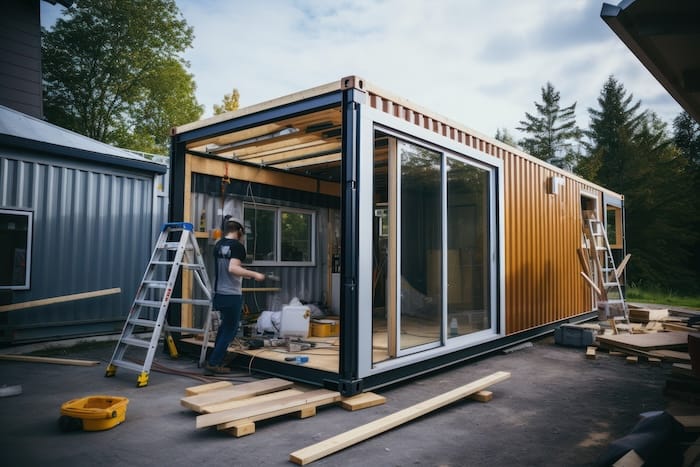Exploring the Versatility of 20 ft Shipping Containers
The use of shipping containers has expanded well beyond the shipping industry and has completely altered the worldwide distribution of goods. With its ideal combination of mobility and storage space, the 20-foot shipping container stands out among the available options.
This article explores the many uses of these containers, showing how their sturdy build and flexible layout make them useful in many fields.
The Origin of Shipping Containers
American transport entrepreneur Malcolm McLean initially introduced shipping containers in the 1950s. By cutting down on loading times and damage risks, his invention made cargo shipping much more efficient. For instance, the 20-foot container became the industry standard because of its practicality and manageability.
These containers provide around 1,360 cubic feet of storage capacity, with dimensions of roughly 20 feet in length, 8 feet in width, and 8.5 feet in height.
Advantages of 20 ft Shipping Containers
Durability and Security
Constructed from high-quality steel, 20 ft Shipping Containers are designed to withstand harsh marine environments. Their durability makes them ideal for secure storage and transportation, protecting contents from weather, theft, and damage.
Their strong locking mechanisms and room for future security upgrades make them ideal for protecting expensive items.
Cost-Effectiveness
The use of 20-foot shipping containers is more economical than the construction of conventional structures or storage facilities. Companies and people alike can save money by going with them because of how cheap they are to buy and keep up with.
They can be easily moved and transported thanks to their modular design, which reduces infrastructure expenses.
Ease of Modification
The flexibility of 20-foot shipping containers is a major plus. They are highly adaptable and may be used for many different things. Offices, residences, workshops, stores, and more may be made out of these containers with a little ingenuity and engineering.
Thanks to the uniform dimensions, multi-container constructions can be easily built by stacking and integrating them.
Innovative Uses of 20 ft Shipping Containers
Residential and Commercial Spaces
Housing and business spaces made from repurposed shipping containers are all the rage. Some well-known examples include container homes and offices. These buildings are more eco-friendly than average because of the recycled materials they use, and they also have a distinct visual appeal.
All the conveniences of a conventional house can be brought to a container home by installing insulation, plumbing, and electrical systems.
Pop-Up Shops and Restaurants
Many entrepreneurs have taken to using 20-foot shipping containers as temporary storefronts for their pop-up eateries and shops. Because of their portability, companies may set up shop in heavily populated locations or during events with relative ease. Customers are drawn in and left with a lasting impression by the containers’ industrial appearance, which also complements modern design trends.
Storage Solutions
Twenty-foot shipping containers are an affordable and practical option for people and companies who need more space to store their belongings. Storage for seasonal goods, tools, equipment, and personal possessions is possible with their help. The containers are great for both long-term and short-term storage because they are weather-resistant, so your belongings will stay safe from the elements.
Emergency Shelters
A 20-foot shipping container can be quickly assembled into a makeshift shelter in the event of a natural disaster. Those impacted by natural calamities can find a haven in their robust construction. These containers can be easily customized to incorporate essential amenities and healthcare services, providing prompt assistance during emergencies.
Agricultural Applications
Shipping containers are becoming more popular among farmers and agricultural companies as a means to creatively solve problems. Vertical farms and hydroponic systems are two examples of how they can be utilized as agricultural units to cultivate crops in a controlled environment.
The short distance that food must travel from farm to table can be significantly reduced by placing these containers in metropolitan settings, thanks to their portability.
The Future of 20 ft Shipping Containers
The adaptability of 20-foot shipping containers keeps sparking creativity in many fields. With their long-lasting nature, affordability, and versatility, they are a priceless asset in a society that values efficiency and sustainability more and more.
These containers are now an integral part of contemporary infrastructure and design, and their utility will only grow as new technologies and innovative solutions are developed.
Keep an eye for more latest news & updates on Next Web Log!






